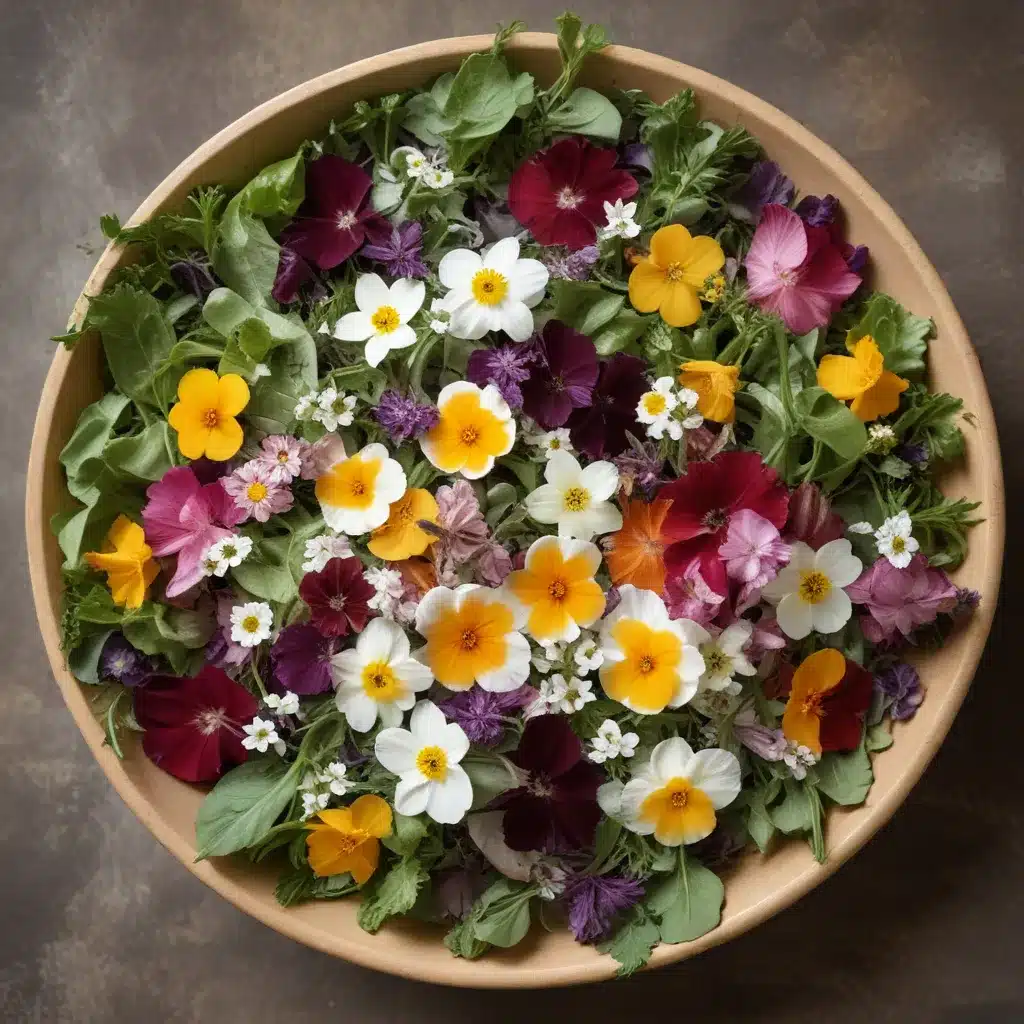
As a farm educator at Crooked Pines Farm, I’m always on the lookout for ways to connect our visitors – especially the younger ones – with the incredible diversity of life thriving in our fields and gardens. One of my favorite ways to do this is by introducing them to the joys of edible flowers. These vibrant, flavorful blooms aren’t just beautiful to look at; they can also transform a simple salad into a true work of art.
Types of Edible Flowers
While not all flowers are safe to consume, there is a wide variety of edible flower options that can add both visual appeal and unique flavors to your meals. Some of our farm favorites include:
- Anise Hyssop: With its subtle licorice aroma and taste, anise hyssop is a perennial herb that produces lovely purple, pink, white, and blue blooms.
- Bee Balm (Bergamot): Also known as bergamot, bee balm is a member of the mint family with a citrusy, minty flavor and cheerful, firework-like flowers.
- Borage: With its vivid blue, starlike flowers and cucumber-like taste, borage is an easy-to-grow annual that also attracts plenty of pollinators to the garden.
- Calendula: Also called pot marigolds, these bushy annuals come in a range of warm yellow and orange hues, offering a slightly spicy flavor.
- Chives: In addition to their grassy, onion-like leaves, chives produce delicate purple flowers that pack a flavorful punch.
- Nasturtiums: These vibrant, trailing annuals bear edible leaves, flowers, and even seeds, with a peppery, watercress-like taste.
- Pansies: A cool-season favorite, pansies come in a rainbow of colors and have a mild, evergreen-like flavor.
Nutritional Benefits of Edible Flowers
Beyond their aesthetic and culinary appeal, many edible flowers also pack a nutritional punch. Calendula, for example, is a rich source of Vitamins A and C, while the brightly colored blooms of marigolds and nasturtiums contain beneficial antioxidants. Even delicate flowers like pansies and violets can contribute vitamins, minerals, and other phytonutrients to your diet.
Aesthetic Appeal of Edible Flowers
Of course, one of the primary draws of edible flowers is their stunning visual appeal. Whether you’re looking to create a showstopping salad for a special occasion or simply want to liven up your daily greens, the vibrant hues and delicate textures of these blooms can instantly transform a dish from ordinary to extraordinary. And the best part? You don’t need any special culinary training to leverage their beauty – even the most novice home cook can harness the power of edible flowers to craft Instagram-worthy plates.
Salad Composition
When it comes to building an edible flower salad, the possibilities are endless. The key is to strike a balance between the various flavors, textures, and colors at play. Start with a base of fresh, leafy greens – think mixed baby lettuces, spinach, or arugula. Then, layer in a variety of flower varieties to complement the overall flavor profile:
- Peppery blooms like nasturtiums or marigolds can provide a nice contrast to milder greens.
- Delicate, subtly sweet flowers like pansies or violets make for a beautiful garnish.
- Aromatic herbs like chive blossoms, bee balm, or borage can infuse the salad with their distinctive scents and tastes.
Don’t be afraid to get creative with your combinations! You might try pairing the bold hues of calendula with the cool, minty notes of anise hyssop, or mixing the herbaceous flavors of rosemary and thyme blooms.
Gardening Considerations
Of course, to truly enjoy the benefits of edible flowers, you’ll need to put in a bit of work on the gardening side. Fortunately, many of the most popular options – like chives, nasturtiums, and marigolds – are relatively easy to grow, even for novice gardeners.
When cultivating edible flowers, be sure to start with high-quality, organically grown seeds or seedlings. Avoid any plants that may have been treated with harsh pesticides or herbicides, as these can linger in the flowers and pose potential health risks.
Harvesting is best done in the morning, when the blooms are fresh and the essential oils are at their peak. Gently cut or pinch the flowers, leaving a short stem attached. Storing can be tricky, as these delicate blossoms tend to wilt quickly. The best approach is to keep them refrigerated in a sealed container lined with a damp paper towel, using them within a day or two of picking.
Culinary Applications
Once you’ve got your edible flower haul, the fun really begins! These vibrant blooms can elevate all sorts of dishes, from sweet to savory.
For salads, try incorporating the flowers directly into the mix, using them as a colorful and flavorful garnish. You can also infuse vinaigrettes and dressings with the essence of edible flowers, whether by steeping the petals directly in the vinegar or by using flower-infused oils.
Beyond salads, edible flowers make a stunning addition to all sorts of dishes. Sprinkle them over soups, pasta, or grain bowls for a pop of color and flavor. Use them to decorate baked goods, cocktails, or even ice cubes for a truly eye-catching presentation. And don’t forget the potential of flower-infused syrups, jams, and preserves – the possibilities are endless!
As you explore the world of edible flowers, remember to have fun and experiment. With a little creativity, you can unlock a whole new dimension of flavor and beauty in your kitchen. Who knows – you might even inspire the next generation of young farmers and chefs in the process!


